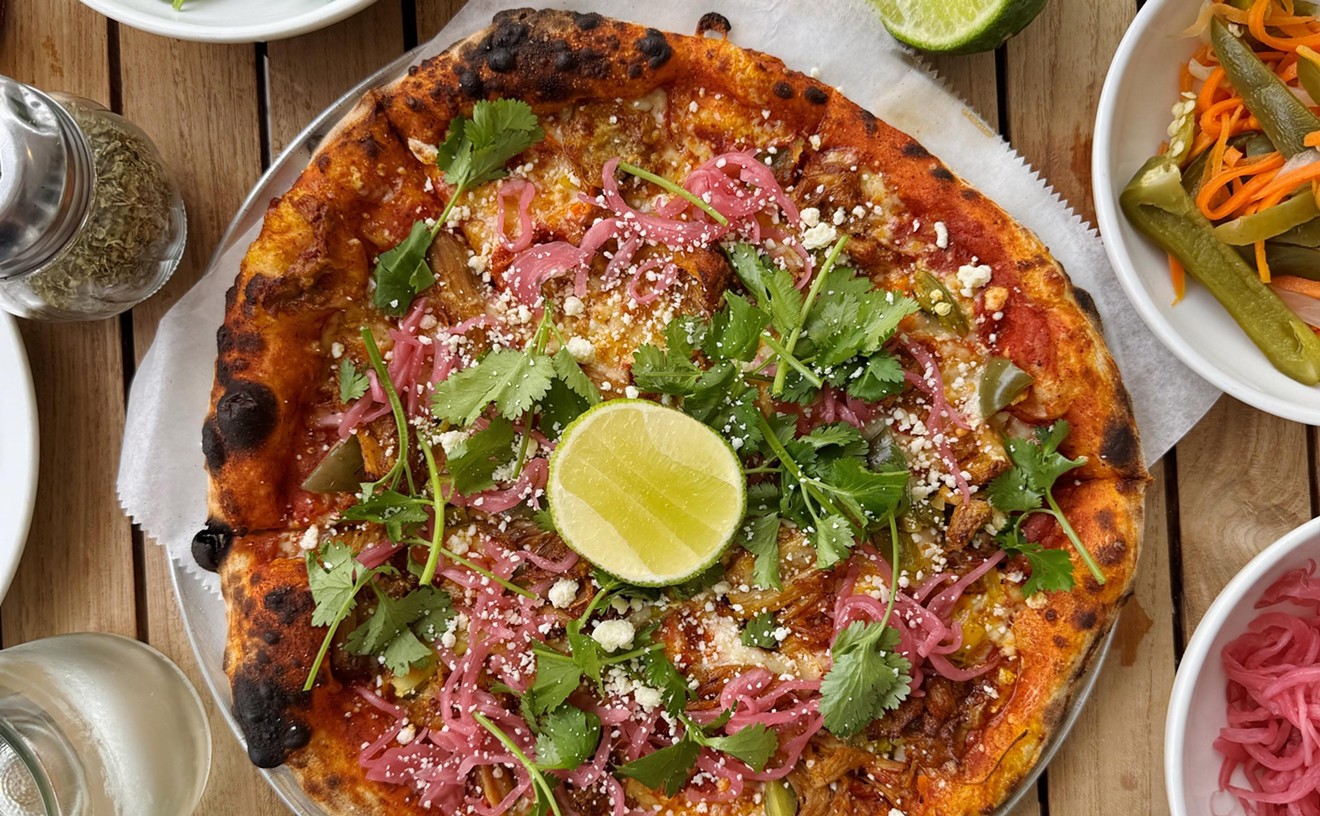Two decades later, Jaffrey's argument still rings true. In college I had an Indian roommate, a woman who couldn't cook an omelet (she'd put the cheese in the frying pan before the egg) but who made incredible "barbecued" chicken, marinating the bird for days in a combination of yogurt, cumin, chili powder, red pepper, and "secret" spices, then charring it slowly on a covered grill. Another Indian friend cooked me a curry dish, warning me that I would be hard-pressed to find its equal. In Indian restaurants across the country, I have yet to experience anything more tender than Anita's drumsticks, more silky and balanced than Jason's curry.
In another respect, however, Madhur Jaffrey was mistaken. A certain quality of Indian cuisine does translate wonderfully from the home to the restaurant: hospitality. For instance, while I can't say Akash Indian Restaurant achieves tandoori nirvana, I have rarely been made to feel so welcome at any dining spot in Miami.
Perhaps such warm attention is paid to diners because Akash is family-run, owner Bala Chowdhary overseeing the restaurant while her son Ajay, a jovial conversationalist, plays host and waits tables. Maybe we felt comfortable because of the experienced Chowdhary clan (Bala's other son Bippen owned the now-defunct but much-mourned A Passage to India), who opened Akash in 1989 but sold it in 1993, and once again took over operations in early March. Whatever the reason, we were pleased to munch on an order of pappadums while we looked over the menu. Dotted with cracked black pepper, these crisp, yellow tortillalike crackers, which are made from chickpea flour, were very spicy. (Unaccustomed palates will appreciate the fact that some are served plain.) Accompanying the pappadums was a quintet of chutneys. As common on an Indian table as ketchup is in the states, Akash's condiments covered the spectrum: sour assorted pickle; sliced onion with cayenne-pepper color and flavor; thin, tart-sweet tamarind; a nicely rendered mango chutney with a jellylike consistency and full tropical fruit appeal; and a lemony, almost-creamy but searing chutney of mint and green chilies, which was exceptional. The only downside is the fact that you have to pay for the pappadums (a buck per pancake) and the chutneys (a buck per person).
Unable to decide on starters, we took our waiter's advice and ordered almost all of them, in the manner of a pu-pu platter. And as with pu-pu platters the world over, the contents of this one were served in deep-fried pairs, some greasy, none hot in temperature. Vegetable samosas were slick, browned dumplings stuffed with potatoes and peas and flavored with flat, yellow fennel seeds; meat samosas were identical chickpea-flour triangles filled instead with ground meat and peas, a surprisingly bland combination. A garnish of mint chutney greatly improved the turnovers. Halved panir pakoris, made of Indian cheese coated with graham flour and fried, were less slippery than the samosas, tasting similar to goat cheese but firmer and lacking the same melted texture. Fritters of onions and shredded potatoes, spiced, battered, and finished in the fryer, oozed oil but were delicious nonetheless.
To cut the heaviness of the fried foods, we ordered an assortment of nans, pull-apart chewy flatbreads that are baked by sticking the dough to the walls of the tandoor. Onion kulcha was a fine variation of this leavened pocket bread, stuffed with mild, translucent onions. I didn't care for a second version flecked with dried garlic and dehydrated herbs, nor did I find the plain nan, dense with grease, particularly enticing.
The entrees continued the meal's slightly uneven course. Two varieties of what was essentially the same dish, sag ghost (lamb cooked with spinach) and sag shrimp, differed slightly in spice content as well as main ingredient. This traditional recipe calls for an astonishing assortment of spices: ginger, garlic, coriander, cumin, turmeric, cardamom, and green chilies, as well as a generous dose of garam masala (known as "hot spices," for the heat it lends to the human body), a mix of cloves, bay leaves, cinnamon, and black pepper. While the spices lent appealing depths to the sag, the boneless cubes of meat were tough and dry, a characteristic that unfortunately held true for the lamb kebabs and the tandoori lamb we also tried that evening. The evenly cooked shrimp fared better, especially accompanied by an icy Kingfisher beer.
Tandoori cooking, in which marinated meats are grilled in clay pits heated with wood or charcoal, was introduced to the Indian subcontinent by Pakistani border refugees in the late 1940s. Now it rivals curry (in the American imagination, at least) as the representative dish for the nation's cuisine. Akash's presentation is traditional, fragrantly steaming its way from kitchen to table, the bright orange-red of the chicken and shrimp owing to a special vegetable-based powdered food coloring. Comprising shrimp, chicken, and lamb, the "mixed sizzler platter" we ordered was a tasty but less-than-generous sampler of good tandoori cookery.
Curry, that catch-all word that refers to a standardized combination of cumin, coriander, fenugreek, red pepper, and turmeric, is actually an inaccurate British adaption of kari, meaning sauce (not necessarily one particular kind). The key to Indian cuisine is its distinctive variety and use of spices, as well as the method in which they're utilized -- whole, crushed, or ground -- and the order in which they are stirred into the pot. A mixed-vegetable dish listed under the "curry" heading on the menu was a subtly spiced blend of cauliflower, carrots, peas, and potatoes in a familiar "dry" yellow-curry sauce. On previous visits I have tried the juicy brinjal bhaji (an eggplant curry) and pleasing, protein-rich tarka dal (a curry made with stewed lentils). Each has its own family of flavors.
A soothing plate of chicken tikka masala consisted of boneless tandoori-roasted chicken with fresh tomatoes, cream, green pepper, and onions. This relatively uncomplicated sauce was a wonderful foil for the more piquant sags that challenged the palate. The sauce would have tasted even better had we not ladled it over a slightly old-tasting but still fragrant basmati rice streaked with saffron.
Dessert at Akash is a course meant for the stalwart sweet tooth, which I am. Gulab jamun, fried doughnutlike "milk balls" in warm syrup, immediately made my list of all-time favorites. Mango ice cream was ideally cool, rich, and creamy, a positive end to a meal that without question had its mediocrities but also enough authenticity to prevent me from over-relying on the good nature of Indian friends.









